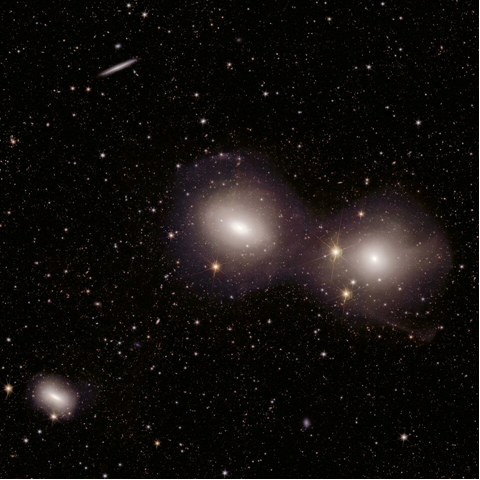Happy Thought for 24 May 2024
Have a Happy
Thought:
Euclid shows us a spectacularly panoramic and detailed view of the Horsehead Nebula, also known as Barnard 33 and part of the constellation Orion. In Euclid’s new observation of this stellar nursery, scientists hope to find many dim and previously unseen Jupiter-mass planets in their celestial infancy, as well as young brown dwarfs and baby stars. CREDIT ESA/Euclid/Euclid Consortium/NASA, image processing by J.-C. Cuillandre (CEA Paris-Saclay), G. Anselmi. CC BY-SA 3.0 IGO
This breathtaking image features Messier 78, a vibrant star nursery enveloped in interstellar dust. Euclid peered deep into this nursery using its infrared camera, exposing hidden regions of star formation for the first time, mapping its complex filaments of gas and dust in unprecedented detail, and uncovering newly formed stars and planets. Euclid’s instruments can detect objects just a few times the mass of Jupiter, and its infrared ‘eyes’ reveal over 300 000 new objects in this field of view alone. Scientists are using this dataset to study the amount and ratio of stars and smaller (sub-stellar) objects found here – key to understanding the dynamics of how star populations form and change over time. CREDIT ESA/Euclid/Euclid Consortium/NASA, image processing by J.-C. Cuillandre (CEA Paris-Saclay), G. Anselmi. CC BY-SA 3.0 IGO
Here, Euclid captures galaxies evolving and merging ‘in action’ in the Dorado galaxy group, with beautiful tidal tails and shells seen as a result of ongoing interactions. Scientists are using this dataset to study how galaxies evolve, to improve our models of cosmic history and understand how galaxies form within halos of dark matter. This image showcases Euclid’s versatility: a wide array of galaxies is visible here, from very bright to very faint. Thanks to Euclid’s unique combination of large field-of-view, remarkable depth, and high spatial resolution, it can capture tiny (star clusters), wider (galaxy cores) and extended (tidal tails) features all in one frame. Scientists are also seeking distant individual clusters of stars known as globular clusters to trace their galactic history and dynamics. CREDIT ESA/Euclid/Euclid Consortium/NASA, image processing by J.-C. Cuillandre (CEA Paris-Saclay), G. Anselmi. ESA Standard Licence
This image is a smaller, close-up cutout from a larger frame featuring the galaxy cluster Abell 2764. It focuses on a bright star lying near to the cluster: V*BP-Phoenicis/HD 1973, a star within our galaxy and in the southern hemisphere that’s nearly bright enough to be seen by the human eye. Euclid’s design and observing capabilities mean that the space telescope can observe very faint objects lying very close to such bright stars without being blinded by the ambient starlight. CREDIT ESA/Euclid/Euclid Consortium/NASA, image processing by J.-C. Cuillandre (CEA Paris-Saclay), G. Anselmi. CC BY-SA 3.0 IGO
Bonus Public
Safety (?) Announcement: If you’re tired (or suspicious) of AI-generated
answers to your google search, you can get rid of this often-wrong information
that takes up your entire search page results. For Chrome on Windows and MacOS
computers, follow along in the steps below (for other web browsers and
operating systems (including phones), follow the link: https://tenbluelinks.org/)
1. Open "Settings
-> Search engine -> Manage search engines" or copy-paste this in
your address bar:
chrome://settings/searchEngines
2. Next to the "Site
search" section click on "Add" button. (you may have to
scroll down past all of the “search engines”.)
3. Fill the details in the
dialog window:
- Search engine:
Google Web
- Shortcut:
@web
- URL:
{google:baseURL}search?q=%s&udm=14
(The URL is very important, you may want to copy-paste)
4. You will see your new
search engine "Google Web" in the list. Click on the menu icon next
to it and then on "Make default".
Yes, you entered the details into the “Site Search” section, but what you’ve
just created will appear just above in the “Search Engine” section.
5. Done!
6. Now every time you do a
search, you will see "q=search&udm=14" in the
address bar of your browser, but you will not see AI-generated
hallucinations as your first answer.
Thanks to @coreyspowell for
helping us look up in wonder!
And thanks to tenbluelinks for the tip.






Comments
Post a Comment
Thank you, we love reading your comments!